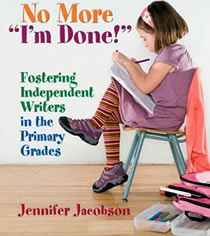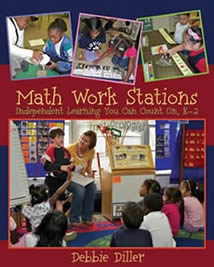Some kids are early finishers who complete activities way faster than the other children, and what they do is spot on for their developmental levels.
Other children rush through activities and need encouragement to go back and complete sections or to add more details. Many children just like to be the fastest!
Another group is seldom finished in time before other activities, like recess, gym or lunch are scheduled to begin.
So how do educators juggle these differences? As well of structuring the classroom and setting certain boundaries, consistent modeling of drawing and writing activities will inspire your students to do the same with their free time.
General guide for children who finish quickly…
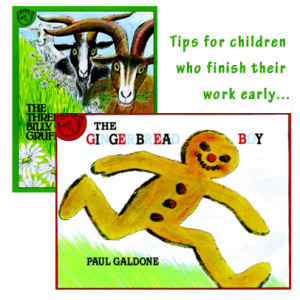 Present activities for early finishers that do not appear to be “too much fun” or many children will hurry their work to make sure they have a turn.
Present activities for early finishers that do not appear to be “too much fun” or many children will hurry their work to make sure they have a turn.
Do not present early finishers:
- with activities that involve a lot of cleanup
- with brand new materials or toys, as the other children will be curious and will want to try them
- with activities that are noisy or cause the children to laugh or get excited
- with learning activities that all the children should experience, resulting in some children never having an opportunity to try them
Some activities that work…
As I value play time (self-directed play, learning centers, discovery learning times) as a learning experience that ALL children should participate in, I hesitate to use it for early finishers.
Try these activities for short periods of time: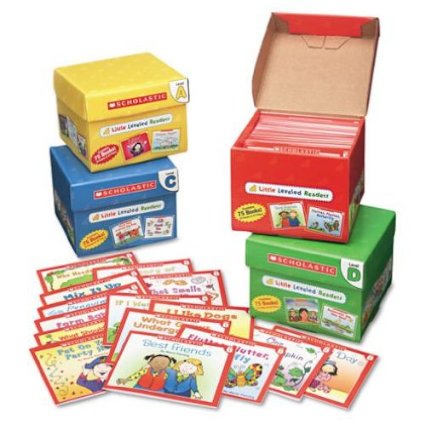
- completing puzzles
- looking at books or mini book sets
such as the one on the right
- examining the science observation table items
- drawing
- Plasticine™ table or other modeling clay activity that all children will get to experience at a later center time
Teaching Style
To eliminate much of the above problem, try teaching with a more inquiry-based learning approach.
Students are motivated when educators:
- offer objects for them to be curious about
- encourage them to ask questions
- allow them to touch and investigate
- direct their attention to focus on a specific topic that provides opportunities for them to find more information from books and other sources
- present opportunities for collections, sorting, classifying, comparisons, testing make activities available that include observations about quantity, size, position and proportion
- increase their vocabulary
- encourage different ways to record their observations and new knowledge and give them opportunities to share it
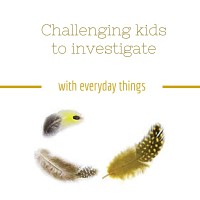
If you are new to this style of teaching, check out a sample lesson here.
Early Finisher Books
There are excellent books available that provide guides for how to teach to different ages and abilities and foster independence.
No More “I’m Done!”: Fostering Independent Writers in the Primary Grades
Dillar discusses how to link small group work with the rest of the day, how to have a balance between whole group, small group, one-on-one instruction and individual work and how to fit it into a busy day. This book includes reproducible sheets – how to choose a lesson focus, suggested lesson sequence, a chart correlating reading levels and skills needed, whole group lesson ideas, scoring rubrics, prompts teachers can use for each skill they teach and sources for reader’s theater.
Making the Most of Small Groups: Differentiation for All
This book answers questions regarding small-group instruction in elementary classrooms such as:
How do I find the time?
How can I be more organized?
How do I form groups?
How can I differentiate to meet the needs of all of my students?
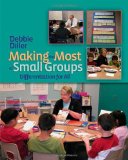 This book is structured around the five essential reading elements: comprehension, fluency, phonemic awareness, phonics, and vocabulary. The book provides practical tips, sample lessons, lesson plans and templates, suggestions for related literacy work stations, and connections to whole-group instruction.
This book is structured around the five essential reading elements: comprehension, fluency, phonemic awareness, phonics, and vocabulary. The book provides practical tips, sample lessons, lesson plans and templates, suggestions for related literacy work stations, and connections to whole-group instruction.
Math Work Stations: Independent Learning You Can Count On, K-2
Diller explains the process of creating meaningful and engaging math stations that help students understand the concepts being taught in whole group, further their thinking, challenge them to cooperatively work together to solve problems.
Stations are organized by grade level (K-2), and provides ideas to carry out in the classroom that work on specific concepts and skills. Uses many cheap or free resources.
